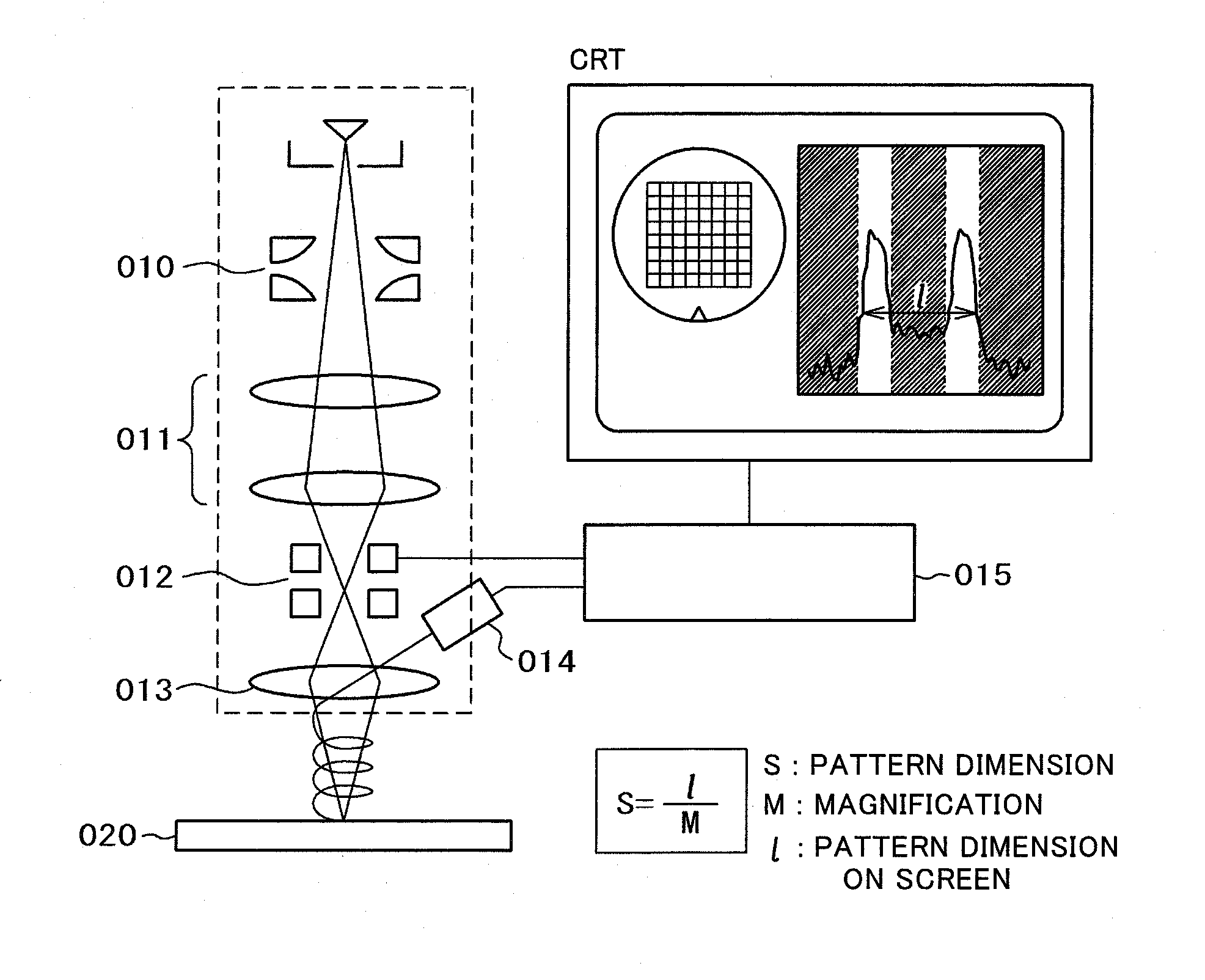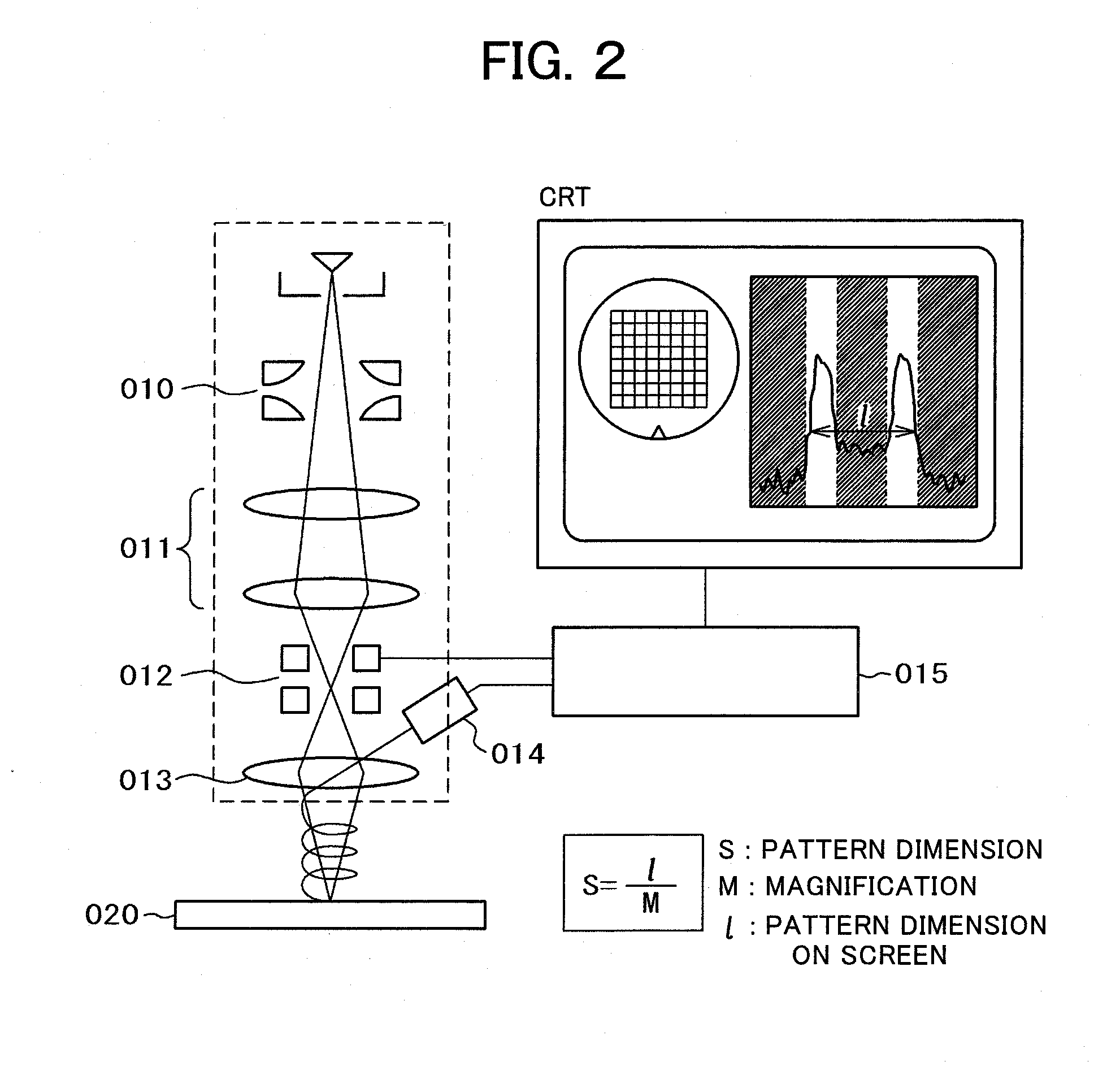Charged particle beam device
a charge particle and beam technology, applied in the field of charge particle beam devices, can solve the problems of general difficulty in setting a pattern to be measured in the region of high magnification images, and achieve the effect of reducing measurement reproducibility and matching tools
- Summary
- Abstract
- Description
- Claims
- Application Information
AI Technical Summary
Benefits of technology
Problems solved by technology
Method used
Image
Examples
embodiment 1
[0040]FIG. 1 illustrates a flow of dimension measurement in a charged particle beam device pertaining to the present invention. The steps of loading a wafer (step 101), moving the stage (step 102), capturing an image at a low magnification (step 103), pattern recognition (step 104), image shift (step 105), and capturing an image at a high magnification (step 106) are as described in the Background Art section.
[0041]In the present invention, a position of image shift (dx, dy) when capturing an image at a high magnification is stored (step 301), reference is made to a lookup table having a correlation between an image shift position and an image or profile correction coefficient stored therein (step 302), and a image or profile correction is performed (step 303). Then, dimension measurement is performed using the corrected image or profile (step 107).
[0042]How to create the lookup table used in step 302 and how to make correction in step 303 are detailed below. FIG. 6 illustrates a fl...
embodiment 2
[0064]While the first embodiment features evaluating correction coefficients for profile or image correction, amounts of change for dimension values measured at each image shift position may be determined beforehand and results may be registered into a lookup table. The structure of such a lookup table is shown in FIG. 15. Offset values to adjust dimension measurement results are described in the lookup table.
[0065]Lookup tables in the foregoing first embodiment are registered for each imaging condition. However, lookup tables need to be registered for each imaging condition (acceleration voltage, beam divergence angle, etc.) and for each pattern to be measured, because the amounts of change for dimension measurement values differ depending on the pattern to be measured. In a case that the number of types of patterns to be measured is small, this embodiment is beneficial.
embodiment 3
[0066]While, in the first embodiment, a relationship between image shift positions and varying beam diameters is obtained by actual measurement in the flow shown in FIG. 6, beam diameters at all image shift positions may be calculated by a SEM optics simulator and results may be converted to correction coefficients which then may be registered into a lookup table.
[0067]More specifically, in this embodiment, given that the beam diameter at a given image shift position is bwn in terms of a Gauss function and the maximum beam diameter in the sphere of image shifting is bwmax in terms of a Gauss function, a correction coefficient σn associated with each image shift position is calculated by σn=(bwmax2−bwn2)1 / 2 Results of this calculation are registered into a lookup table as shown in FIG. 12, as is the case for the first embodiment, and profile or image correction is performed by the method illustrated in FIG. 14(b), as is the case for the first embodiment.
PUM
 Login to View More
Login to View More Abstract
Description
Claims
Application Information
 Login to View More
Login to View More - R&D
- Intellectual Property
- Life Sciences
- Materials
- Tech Scout
- Unparalleled Data Quality
- Higher Quality Content
- 60% Fewer Hallucinations
Browse by: Latest US Patents, China's latest patents, Technical Efficacy Thesaurus, Application Domain, Technology Topic, Popular Technical Reports.
© 2025 PatSnap. All rights reserved.Legal|Privacy policy|Modern Slavery Act Transparency Statement|Sitemap|About US| Contact US: help@patsnap.com



